OUR HISTORY
Newstead House was once the finest home in the colony of Moreton Bay, boasting a reputation for hosting lavish parties – the heart of Brisbane’s social life. Built in 1846, it is now Brisbane’s oldest standing European residence and tells the story of early colonial life in Brisbane.
Operating as a House Museum the historic property continues to inspire living history in the tradition it was once revered.
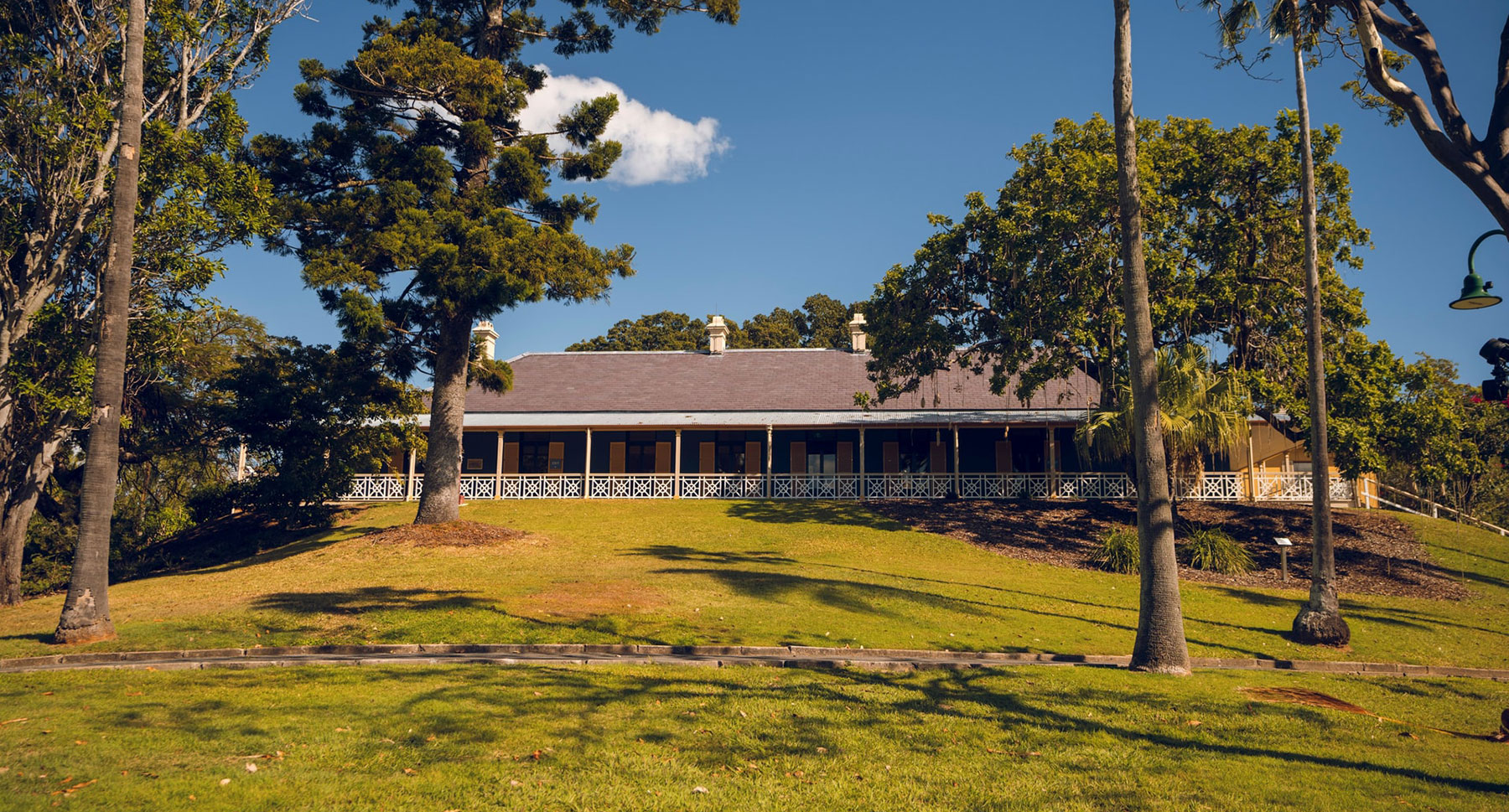
GarranbINBILLA
The site of Newstead House has always been a place of social interaction. With the perfect outlook, rising at the confluence of Breakfast Creek and the Brisbane River Maiwar. Newstead House is located on Newstead Point. This headland, named Garranbinbilla references the fibres used for making huts which were collected here from the local vine known as garran.
The area towards Abbotsford Road Bridge (north of Newstead House) on Breakfast Creek (Yawa’garu or You-arr-garee) – was a complex fishing weir. The creek, the Newstead headland, and the riverside up to Hamilton were all rich fishing grounds for Indigenous locals. For this reason, well into the 1870s there were several Aboriginal camps nearby. The largest was along the creek bank (Yowoggera Park) 200 metres north of Newstead House. Once settlers arrived, colonisation changed the landscape. By 1845, the area where Newstead House now stands became known as ‘Breakfast Creek Farm’.
John Oxley was the young explorer who renamed the Brisbane River in 1823, landing at that bustling riverfront we now call North Quay. Oxley picked the spot for Morton Bay Penal Settlement, which operated from 1825–42, when Brisbane opened for free settlement.
‘Breakfast Creek Farm’ spanned several of these allotments offered for sale — with neighbouring allotments scooped up by brothers-in-law Patrick Leslie and Captain John Clements Wickham in 1845. Leslie named this place Newstead and wrote to his father: ‘I know of no place I would sooner live’ (August 1846).
There were high hopes for Patrick Leslie, second son of William Leslie, a Scottish laird who ventured to Australia in search of prosperity.
Patrick Leslie had big plans for Newstead House, but the Leslie family’s destiny lay elsewhere.
Arriving in Australia in 1834, Leslie began work on his uncle Walter Davidson’s property Collaroi in the Upper Hunter to gain experience in flock management and colonial agriculture. By 1839 there had been a falling out between Leslie and Davidson over financial matters, leading to Leslie’s move to Philip Parker Kings’s property Dunheved near Penrith. He found himself spending more time at nearby property The Vineyard and it appears he was taken under the wings of the HannabalMacarthurs. Mrs Macarthur informed Leslie that all three elder daughters came with a dowry of 1000 ewes. He became engaged to Kate Macarthur in 1837.
Leslie met botanist and explorer Allan Cunningham at The Vineyard in 1839. Cunningham told him of the land to the north that he had discovered in 1827, known as the Darling Downs. Patrick, together with his younger brothers George and Walter and their sheep, headed north. Patrick and an ex-convict Peter Murphy rode ahead and chose an area in March 1840 which was to become Toolburra and Canning Downs Stations. While his brothers stayed to establish the properties, Patrick returned south register the run. He married Catherine in September 1840 at Parramatta, living at Dunheved. Still financially indebted to his uncle, he was eventually assisted by his father to clear the debts and purchased two parcels of Newstead land in 1845 in the name of his father, William Leslie.
Though no evidence yet proves it, it is commonly assumed that Newstead House was built under the supervision of pioneer architect Andrew Petrie. Whoever oversaw the project, workmen cut into the hill to build a two-storey house for Leslie’s wife and son. They were determined to farm there.
In an effusive letter to his father in 1846, Patrick Leslie gushed about his gardens-so-far, growing all the classics — orange, lemon, apricot, peach — alongside fragrant fruits from the world over: guava, loquat, fig, quince, almonds, olives, and even custard apples. He must have felt like he had money growing on trees, with a bumper crop of status-symbol pineapples growing ‘uncommonly well’ (letter from Leslie to his father, 1846).
Leslie’s small family moved in to Newstead by mid-1846, but his energy to work the land quickly ran out. Crushed by financial pressure and the loss of a pregnancy, Patrick and Kate packed up and returned to the Darling Downs just months after settling in.
There were high hopes for Patrick Leslie, second son of William Leslie, a Scottish laird who ventured to Australia in search of prosperity.
Patrick had big plans for Newstead House, but the Leslie family’s destiny lay elsewhere.
Arriving in Australia in 1834, Leslie began work on his uncle Walter Davidson’s property Collaroi in the Upper Hunter to gain experience in flock management and colonial agriculture. By 1839 there had been a falling out between Leslie and Davidson over financial matters, leading to Leslie’s move to Philip Parker Kings’ property Dunheved near Penrith. He found himself spending more time at nearby property The Vineyard, supported by the Hannibal Macarthur. Mrs Macarthur informed Leslie that all three elder daughters came with a dowry of 1000 ewes. He became engaged to Katherine (Kate) Macarthur in 1837.

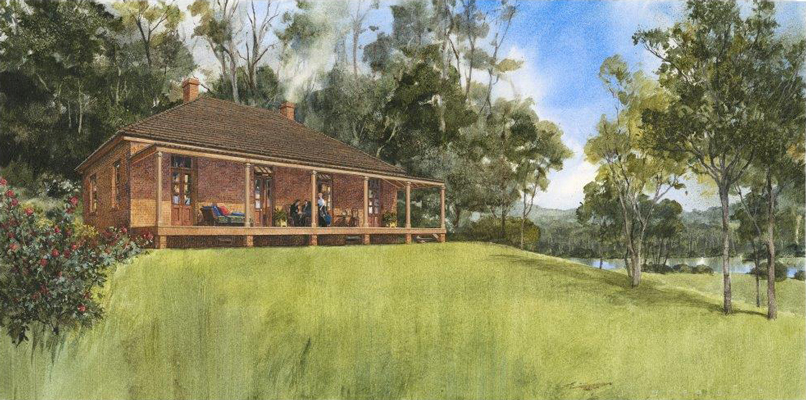
Patrick met botanist and explorer Allan Cunningham at The Vineyard in 1839. Cunningham told him of the land to the north that he had discovered in 1827, known as the Darling Downs. Patrick, together with his younger brothers George and Walter and their sheep, headed north. Patrick and an ex-convict Peter Murphy rode ahead and chose an area in March 1840 which was to become Toolburra and Canning Downs Stations. While his brothers stayed to establish the properties, Patrick returned south to register the run. He married Catherine in September 1840 at Parramatta, living at Dunheved. Still financially indebted to his uncle, and eventually assisted by his father to clear the debts, Patrick purchased two parcels of Newstead land in 1845 in the name of his father, William Leslie.
A common assumption is that pioneer architect Andrew Petrie supervised the build of Newstead House, although no evidence yet proves it. Whoever oversaw the project, workers on the project cut into the hill to build a two-storey house for Leslie’s wife and son. They were determined to farm there.
In an effusive letter to his father in 1846, Patrick Leslie gushed about his gardens-so-far, growing all the classics — orange, lemon, apricot, peach — alongside fragrant fruits from the world over: guava, loquat, fig, quince, almonds, olives, and even custard apples. He must have felt like he had money growing on trees, with a bumper crop of status-symbol pineapples growing ‘uncommonly well’ (letter from Leslie to his father, 1846).
Leslie’s small family moved in to Newstead by mid-1846, but his energy to work the land quickly ran out. Crushed by financial pressure and the loss of a pregnancy, Patrick and Kate packed up and returned to the Darling Downs just months after settling in.
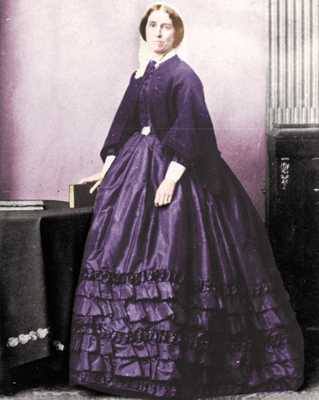
THE WICKHAMS 1847 - 1862
In 1847, the Leslies sold Newstead to their neighbour, the Police Magistrate Captain John Clements Wickham and his wife Anna (Kate Leslie’s sister). Paid £300 per year, Wickham represented the Governor in Brisbane. He was regarded as a kind man who showed ‘sympathy and understanding’ and a ‘genuine sense of responsibility’ in his duties (A.A. Morrison, Australian Dictionary of Biography).
If you’re a Brisbane local, you’ve strolled along the Captain’s legacy: up Wickham Terrace in the CBD, down Wickham Street in the Valley, or into The Wickham pub for a drink. His distinguished Royal Navy career saw him adventure with the likes of Charles Darwin, who gifted the Captain a trio of tortoises. These creatures lived alongside the Wickhams at Newstead House until 1860 — but only one was destined for stardom: Harriet, a Galapagos Tortoise, lived out her days in the care of the Irwin’s at Australia Zoo. She died in 2006, aged 175.
Wickham, on the verge of building a place of his own, paid Leslie just over £1000 for the property. Joining the allotments together, Newstead now boasted 24 hectares — and Wickham saved himself the trouble building a house from scratch.
Victorian-era people loved a good fixer-upper as much as we do today. Sketches and watercolours from the time show that renovations extended the original cottage to suit Wickham’s growing family. And so, John Clements, Anna, and their two young children moved out of the Commandant’s Cottage on George Street and into an entertainer’s dream, with French doors and wide verandahs overlooking the gardens and river.
Newstead House became something of an unofficial Government House, hosting all manner of important guests: Reverend John Glennie, later Archdeacon of Brisbane (1848); William Tyrrell, the Archbishop of Newcastle (1850); and the Governor General, Sir Charles Fitzroy (1854). Governor Fitzroy did complain, however, of finding a surprise in his bed during his stay — the ‘inevitable blacksnake of Breakfast Creek’ (N. Bartley, Opals and Agates).
Anna Wickham treasured the gardens begun by the Leslies, exchanging letters and cuttings with her uncle, the expert botanist William Macarthur. Sadly, she never recovered from the difficult birth of her third child, Alfred William in 1849. In June of 1952, Wickham boarded the Fatima to bring Anna home to Brisbane from a year of rest in Sydney — but it was too late. Her uncle Philip King wrote (in a letter), that Wickham ‘arrived in expectation of a happy meeting’, but in fact ‘just in time to see her in her coffin just before it was closed and to follow her remains to the grave’. She was 35.
Wickham remained a widower until 1857, when he married Ellen Deering — 30 years his junior. Though Wickham advocated for Queensland’s separation from New South Wales, the event itself in 1959 made his role redundant. Denied a government pension, Wickham retired to the south of France, where he died in 1864.
THE WICKHAMS 1847 - 1862
In 1847, the Leslies sold Newstead to their neighbour, the Police Magistrate Captain John Clements Wickham, and his wife Anna (Kate Leslie’s sister). Paid £300 per year, Wickham represented the Governor in Brisbane and became regarded as a kind man who showed ‘sympathy and understanding’ and a ‘genuine sense of responsibility’ in his duties (A.A. Morrison, Australian Dictionary of Biography).
Brisbane locals have strolled along Captain Wickham’s legacy: up Wickham Terrace in the CBD, down Wickham Street in the Valley, or into The Wickham pub for a drink. His distinguished Royal Navy career saw him adventure with the likes of Charles Darwin, who gifted Captain Wickham a trio of tortoises. These creatures lived alongside the Wickhams at Newstead House until 1860 — but only one was destined for stardom: Harriet, a Galapagos Tortoise, lived out her days in the care of the Irwin’s at Australia Zoo. She died in 2006, aged 175.
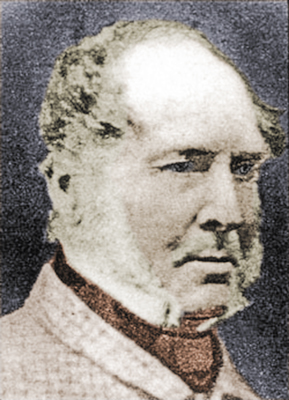
Wickham, on the verge of building a place of his own, paid Leslie just over £1000 for the property. Joining the allotments together, Newstead now boasted 24 hectares — and Wickham saved himself the trouble building a house from scratch.
Victorian-era people loved a good fixer-upper as much as we do today. Sketches and watercolours from the time show that renovations extended the original cottage to suit Wickham’s growing family. And so, John Clements, Anna, and their two young children moved out of the Commandant’s Cottage on George Street and into an entertainer’s dream, with French doors and wide verandas overlooking the gardens and river.
Newstead House became something of an unofficial Government House, hosting all manner of important guests: Reverend John Glennie, later Archdeacon of Brisbane (1848); William Tyrrell, the Archbishop of Newcastle (1850); and the Governor General, Sir Charles Fitzroy (1854). Governor Fitzroy did complain, however, of finding a surprise in his bed during his stay — the ‘inevitable blacksnake of Breakfast Creek’ (N. Bartley, Opals and Agates).
Anna Wickham treasured the gardens begun by the Leslies, exchanging letters and cuttings with her uncle, the expert botanist William Macarthur. Sadly, she never recovered from the difficult birth of her third child, Alfred William in 1849. In June of 1952, Wickham boarded the Fatima to bring Anna home to Brisbane from a year of rest in Sydney — but it was too late. Her uncle Philip King wrote (in a letter) that Wickham ‘arrived in expectation of a happy meeting’, but in fact ‘just in time to see her in her coffin just before it was closed and to follow her remains to the grave’. She was 35.
Wickham remained a widower until 1857, when he married Ellen Deering — 30 years his junior. Though Wickham advocated for Queensland’s separation from New South Wales, the event itself in 1859 made his role redundant. Denied a government pension, Wickham retired to the south of France, where he died in 1864.
Even from the other side of the world, Wickham wasn’t quite ready to let go of Newstead House: he leased the homestead to Queensland’s first Attorney-General, Ratcliffe Pring, from 1860–62. An ill-tempered anti-hero, Pring would famously go on to pick a fist-fight on the floor of Parliament House. (It didn’t hurt his career: even after an arrest, he went on to become a Supreme Court Justice.)
George and Jane Harris moved into Newstead House in December 1862, renting until they could buy the property in 1866. George ran a shipping agency with his brother — as Messrs J. and G. Harris, merchants — importing goods from England, and exporting Australian wool.
This was a vital period for Newstead House. While the Wickham years had seen Newstead stand in as an elegant pseudo-Government House, under the Harrises (soon a large family of six) the house was to enter her party years.
The Harrises worked with renowned architect and politician James Cowlishaw to modernise Newstead, moving the main entrance to face the road, creating a formal entrance hall, adding rooms, and extending the verandah to wrap fully around the house. This is Newstead House as we know her today: spacious, breezy, and lavishly appointed in the eclectic mood of Victorian interior design.
The parties were plentiful and varied. In 1877, Newstead House hosted 400 school children for an elaborate church picnic on ‘Harris Paddock’. In 1883, Edith Maud — the eldest Harris daughter — married George Condamine Taylor on the grounds, with festivities ‘on so princely a scale’ that temporary buildings were raised on site to accommodate 350 guests and a band, lit by ‘countless coloured lanterns’ (entry under Marriages, Week, 1 September 1883, pp. 200, col. 4).
To picture the energy of Brisbane at this time, consider Australia’s first use of public electricity: in 1882, electric lights brought nightlife to Queen Street towards Victoria Bridge.
L.E. Slaughter refers to Newstead in this period as ‘the centre of Brisbane social life’, with guests showing up uninvited for indefinite stays (Newstead House files, RHSQ, undated typescript). The Harris family’s living and entertainment expenses ran up to £20,000 a year. Along with George’s fruitless business investments — including a gold mine, a tin mine, and a wrecked cargo ship bound for London — these expenses forced the Harrises to mortgage Newstead for £10,000 to businessman James Taylor in 1874.
By 1876, Harris had lost Newstead to Taylor, who subdivided and sold off much of the estate. This subdivision gave the suburb of Newstead its name, but left the Harrises with just two hectares to rent. Even local papers reported on the devastation of the ‘ever-genial hostess, Mrs G. Harris’ (Boomerang, 1 December 1888, p. 1). It went from bad to worse: the Harris family’s possessions were auctioned off onsite, and the family moved to North Quay. George Harris died in 1991, his entrepreneurism never quite rewarded.
Even from the other side of the world, Wickham was not ready to let go of Newstead House, he leased the homestead to Queensland’s first Attorney-General, Ratcliffe Pring, from 1860–62. An ill-tempered anti-hero, Pring would famously go on to pick a fistfight on the floor of Parliament House. (It did not hurt his career, even after an arrest, he went on to become a Supreme Court Justice.)
George and Jane Harris moved into Newstead House in December 1862, renting until they could buy the property in 1866. George ran a shipping agency with his brother — as Messrs J. and G. Harris, merchants — importing goods from England, and exporting Australian wool.
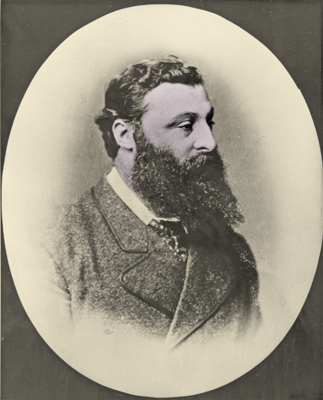
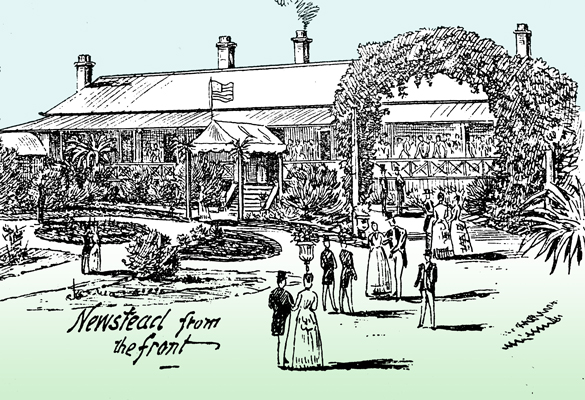
This was a vital period for Newstead House. While the Wickham years had seen Newstead stand in as an elegant pseudo-Government House, under the Harrises (soon a large family of six) the house was to enter her party years.
The Harrises worked with renowned architect and politician James Cowlishaw to modernise Newstead, moving the main entrance to face the road, creating a formal entrance hall, adding rooms, and extending the veranda to wrap fully around the house. This is Newstead House as we know it today – spacious, breezy, and lavishly appointed in the eclectic mood of Victorian interior design.
The parties were plentiful and varied. In 1877, Newstead House hosted 400 school children for an elaborate church picnic on ‘Harris Paddock’. In 1883, Edith Maud — the eldest Harris daughter — married George Condamine Taylor on the grounds, with festivities ‘on so princely a scale’ that temporary buildings were raised on site to accommodate 350 guests and a band, lit by ‘countless coloured lanterns’ (entry under Marriages, Week, 1 September 1883, pp. 200, col. 4).
To picture the energy of Brisbane at this time, consider Australia’s first use of public electricity: in 1882, electric lights brought nightlife to Queen Street towards Victoria Bridge.
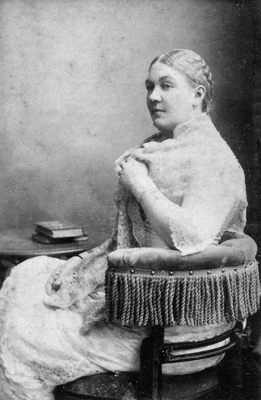
L.E. Slaughter refers to Newstead in this period as ‘the centre of Brisbane social life’, with guests showing up uninvited for indefinite stays (Newstead House files, RHSQ, undated typescript). The Harris family’s living and entertainment expenses ran up to £20,000 a year. Along with George’s fruitless business investments — including a gold mine, a tin mine, and a wrecked cargo ship bound for London — these expenses forced the Harrises to mortgage Newstead for £10,000 to businessman James Taylor in 1874.
By 1876, Harris had lost Newstead to Taylor, who subdivided and sold off much of the estate. This subdivision gave the suburb of Newstead its name but left the Harrises with just two hectares to rent. Even local papers reported on the devastation of the ‘ever-genial hostess, Mrs G. Harris’ (Boomerang, 1 December 1888, p. 1). The Harris family’s possessions were auctioned off onsite, and the family moved to North Quay. George Harris died in 1991, his entrepreneurism never quite rewarded.
CHANGING TIMES AND CHANGING TENANTS 1890–1918
With the Harris family gone, Newstead House constantly changed hands, from owner to owner and tenant to tenant. The Flegeltaub family rented the house from 1891–94, and staged another Newstead wedding, with eldest daughter Annie married inside the house on a rainy day in 1893.
Following the Flegeltaubs were the Clarks, until around 1896. James Clark was an innovator in the pearling industry, which earned him a fantastic nickname: ‘the Pearl King’. When Lysaght Brothers & Co. purchased Newstead in mid-1896, the estate fell dormant, though sometimes housed employees of their rabbit-proof fencing company.
This flux went on as decades passed and Brisbane changed. The electric tram was introduced in 1897; Australia’s colonies federated to form a united Commonwealth in 1901; and, in 1902, Brisbane was officially granted ‘city’ status. Finally, in January 1918, Brisbane City Council purchased Newstead House from the homestead’s final private owners, the Heaslop family (who, of course, had seen a daughter married on the grounds).
Under the protection of Brisbane City Council, Newstead House was ready for a whole new century.
Newstead Park opened in 1921, freshly redesigned by tenant and Superintendent of Parks, Harry Moore. This act of caring for Newstead House as a Brisbane landmark paved the way for the Historical Society of Queensland to establish a museum in 1932, with a management trust formed in 1939. In this same year, Newstead House was the first property in Queensland to be protected by an Act of Parliament: Newstead House Trust Act 1939.
Part of the war effort during the 1940s, Newstead House was occupied as a barracks by U.S. Servicemen from the Photographic Detachment of the 832nd Signal Service Company
Newstead House welcomed the Queensland Women’s Historical Society from 1951–67 and undertook a modest restoration from 1968–70.
The homestead at last opened to the public as a house museum in 1971. Friends of Newstead House formed in 1974 and celebrated her 130th anniversary in 1976 with a fundraising drive to restore the dining room and gentleman’s library. The property was listed on the Queensland Heritage Register in 1992.
Loved by generations of Queenslanders, Newstead House showed natural wear and tear from thousands of people visiting the building each year. The State Government announced significant funding for the conservation of Newstead House and Substation with works commencing in 2021.
Learn More about the Newstead House and Substation Conservation Project.

